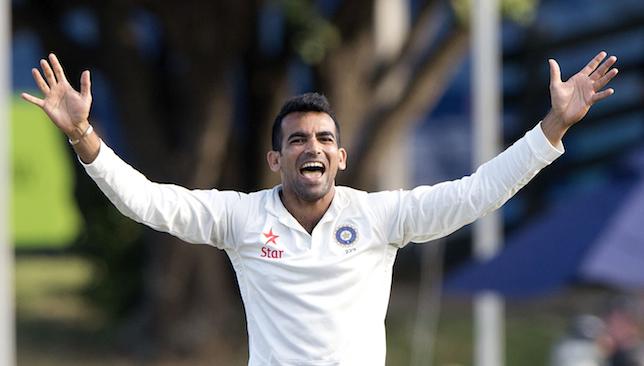
Here’s a statistic that should give everyone a better appreciation of Zaheer Khan and his place in Indian cricket.
– #360view: Cook the toast of Asia with latest ton
Ever since India made their debut against England in 1932, they have played 491 Test matches. In that period, only 19 bowlers have taken more than 100 wickets. Only six of them have been fast bowlers, and only two have gone past the 300-wicket mark – Kapil Dev (431) and Zaheer (311).
His haul in 92 Test matches makes him the fourth best bowler of all time in India after Anil Kumble (619), Dev and Harbhajan Singh (417).
India is no country for fast bowlers. It is one job that should come with hardship allowance. Bowling on dead tracks is back-breaking, and that is ultimately the reason that has forced him to call time on his career this week. Various niggles picked up during his career left him with no other choice.
There was a time when the profession was so pointless that Sunil Gavaskar, one of the greatest opening batsmen of all time, would open the bowling as well. His job was to bowl a couple of overs of nothing in an effort to see off a bit of shine from the ball, before it was handed over to one of India’s famous spin quartet.
But Zaheer was different – his skills were extraordinary. He could move the ball both ways with the new ball, and then reverse swing the old ball appreciably. And he was wily – always keeping the batsmen guessing.
And, at least in contemporary cricket, there was no better bowler to left-handed batsmen. Just take a look at some of his bunnies: Graeme Smith, dismissed 14 times in 27 innings; Kumar Sangakkara (11), Matthew Hayden (10) and Andrew Strauss (seven times in seven matches). It’s an impressive hit-list.
Congrats on a fantastic career @ImZaheer enjoyed our battles,even if you won most of them:)all the best for your future.you made India proud
— Graeme Smith (@GraemeSmith49) October 15, 2015
Zaheer’s example is a sad reflection of the Board of Control for Cricket in India (BCCI) and how it works. One of the recurrent injuries for the Mumbai fast bowler involved his hamstrings, and modern day physios insist that it is one area of an athlete’s body that can be successfully managed. With all the money at their disposal, they really should have taken better care of their premier bowler.
It was the hamstring (again) that ruled him out on the opening day of the opening Test match against England during the 2011 tour, and that completely took the sting out of India’s challenge. Zaheer had already taken 2-18 in 13 overs, when he limped off the field, while India’s chances plummeted and they lost the series 4-0.
My favourite Zaheer anecdote is the one involving England and the jelly beans controversy during the 2007 tour.
While batting in the first innings of the second Test at Nottingham, some England players (Zaheer blamed Kevin Pietersen) threw jelly beans at the wicket to annoy the batsman, and it did the trick.
But the ploy backfired on England when a fired up Zaheer bowled sensationally in the second innings, his 5-75 paved the way for India’s Test and series win.
Zaheer’s significance for India was not just restricted to on the pitch, but also in how he mentored the up-and-coming fast bowlers towards the end of his career.
It really would be prudent if the BCCI rope him right now to help the future generation of Indian fast bowlers on an official basis.